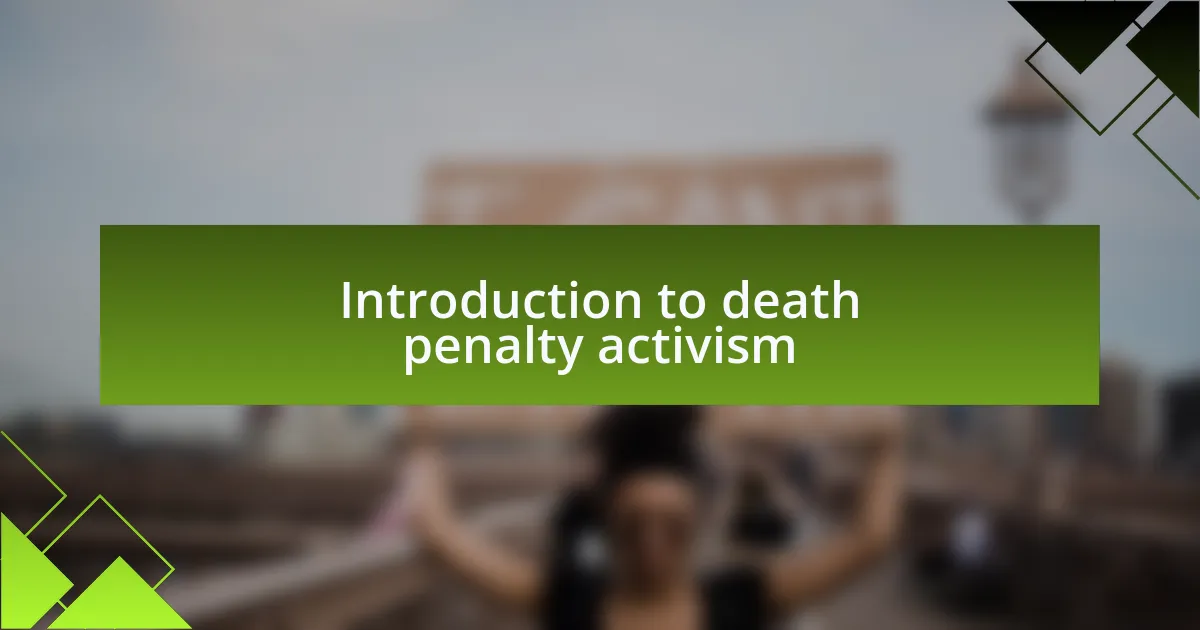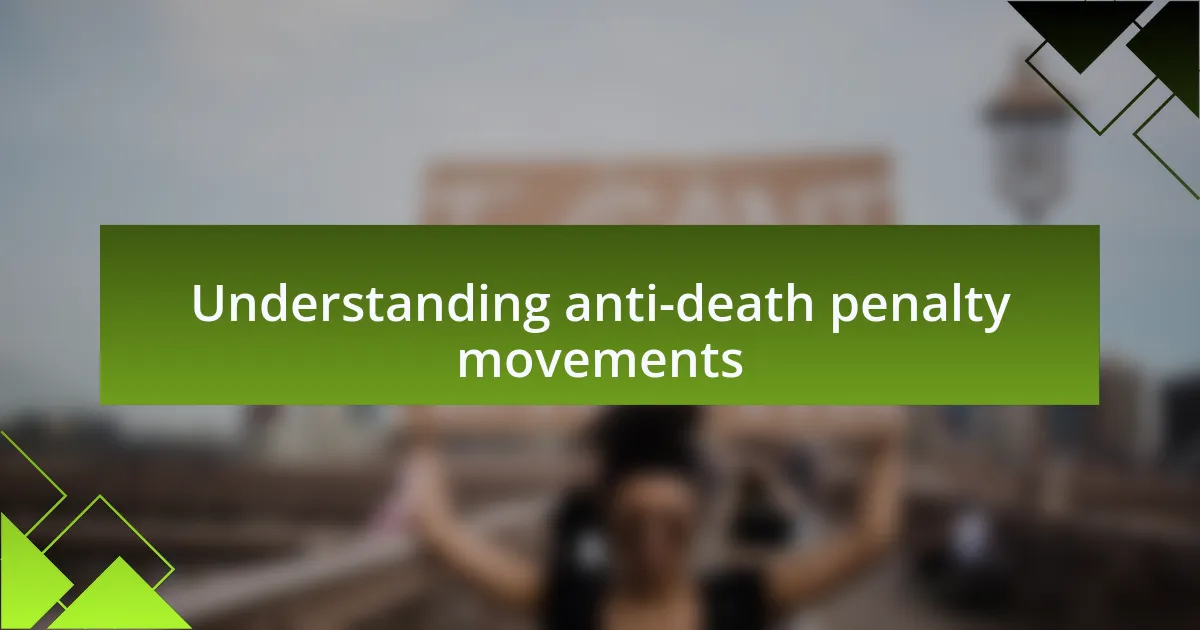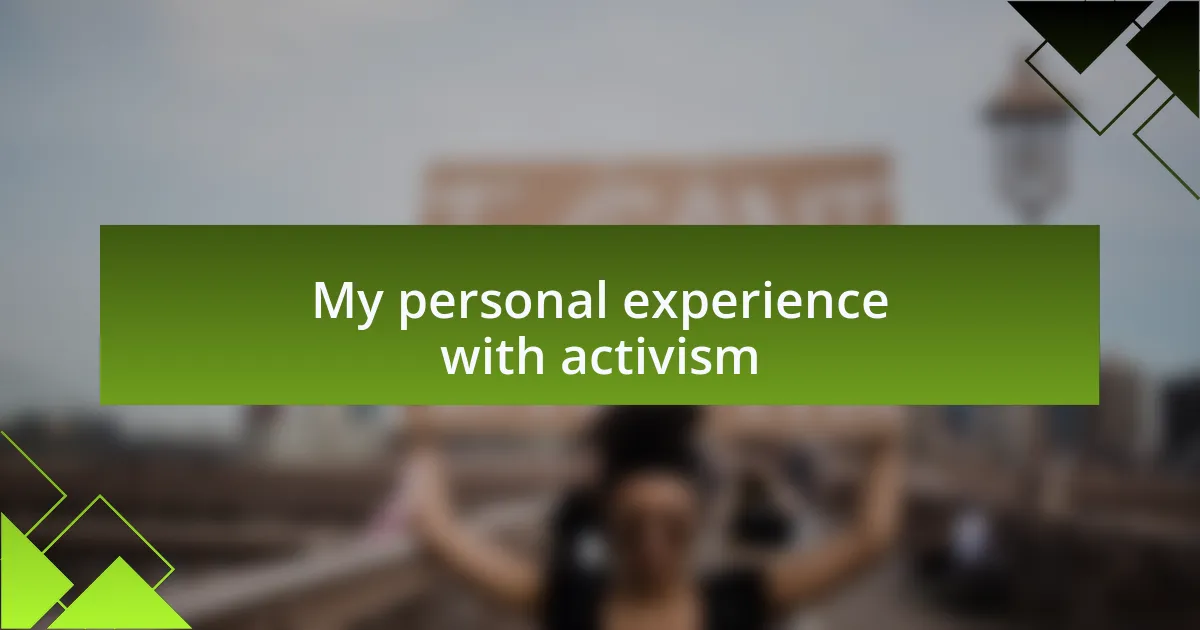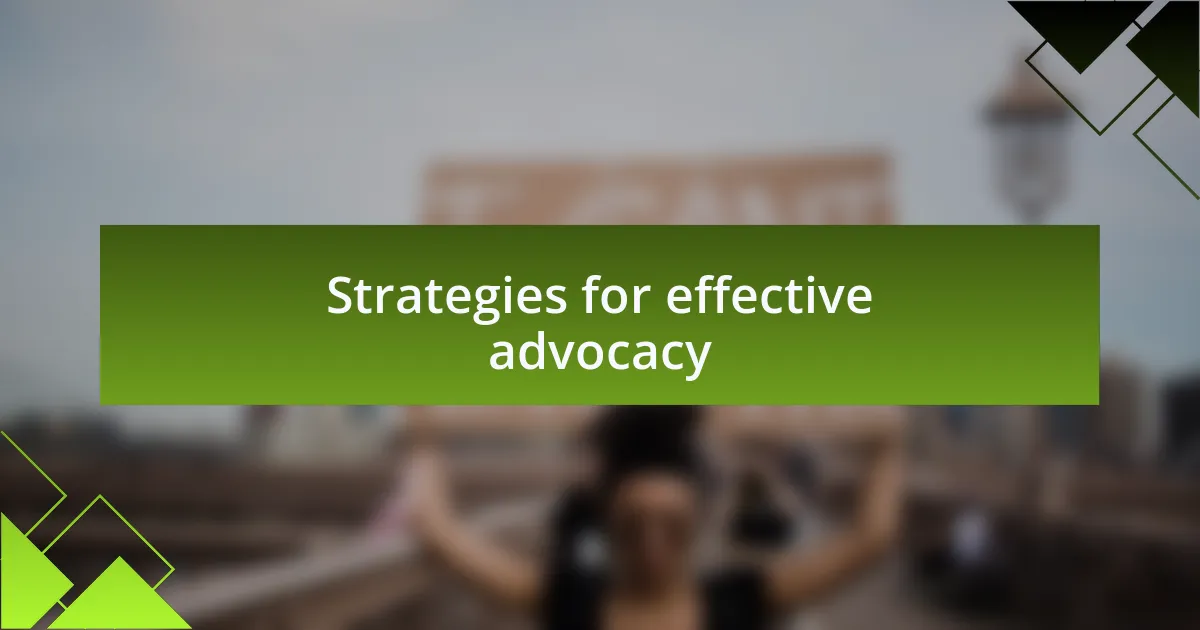Key takeaways:
- Personal experiences and stories are central to death penalty activism, driving emotional engagement and commitment among advocates.
- Understanding the anti-death penalty movement requires recognizing the moral and legal implications of wrongful convictions and the value of human dignity.
- Effective advocacy strategies include storytelling, coalition building with like-minded organizations, and leveraging social media to amplify the message.
- Grassroots campaigns can shift public perceptions and foster understanding, making activism accessible through community engagement.

Introduction to death penalty activism
Death penalty activism is a deeply personal and often transformative journey for many individuals. I remember the first time I attended a protest; the energy was palpable, and I felt an overwhelming sense of purpose among the crowd. It made me question the very fabric of justice and whether taking a life can ever truly serve as a deterrent.
Engaging with this issue isn’t just about statistics and legal arguments; it’s about the human stories behind the numbers. I still think about the heart-wrenching testimonies of families affected by wrongful convictions. How can we stand by and allow a system that has, in some instances, taken innocent lives? This question has fueled my passion and commitment to this cause.
The landscape of death penalty activism is as diverse as its advocates. Whether through grassroots campaigns, educational initiatives, or personal stories shared in the media, each effort contributes to a larger movement. I find it fascinating how a single story can ignite a spark in someone, turning them into a fierce advocate for change. What drives you to engage with this issue? For me, it’s the belief that everyone deserves a chance at redemption and that our humanity is defined by how we treat the most vulnerable among us.

Understanding anti-death penalty movements
Understanding anti-death penalty movements involves delving into the diverse philosophies and motivations behind them. I remember sitting in a community meeting, surrounded by survivors of loved ones wrongfully convicted. Their stories resonated deeply with me; how could anyone justify a death sentence when innocent lives were at stake? This realization sparked a profound understanding that our fight isn’t just against the death penalty but also for the preservation of human dignity.
The anti-death penalty movement thrives on a tapestry of moral beliefs, legal objections, and advocacy for systemic change. I once spoke to a lawyer who dedicated her life to overturning wrongful convictions. She passionately articulated how deeply flawed legal systems can be, reminding me that for every execution, there are countless untold stories of despair and injustice. Isn’t it mind-boggling to think that our judicial system, which should uphold fairness, sometimes fails so dramatically?
Events within the anti-death penalty realm are often fueled by a mixture of hope and desperation. Participating in rallies and discussions, I’ve witnessed moments where huge crowds rally behind a single cause, driven by the collective grief of those impacted by these policies. The excitement is palpable, yet each advocate carries personal weight on their shoulders. These experiences continuously reinforce my belief that the movement is about uniting voices against a common injustice and pushing for a future where mercy prevails over punishment.

My personal experience with activism
While engaged in my activism, I had the chance to meet a former death row inmate who had been exonerated after years of wrongful imprisonment. Hearing his story firsthand was haunting yet enlightening; it made me question the very foundation of our justice system. How many more people like him might be sitting in prison, their lives hanging in the balance due to a flawed system?
Another significant moment for me occurred at a vigil held for those who lost their lives to the death penalty. As I stood amidst candlelit faces, each flicker symbolizing a life extinguished too soon, I felt a profound sense of solidarity with everyone around me. I realized that our shared sorrow was a powerful reminder of the lives behind the statistics, and it fueled my commitment to advocacy.
I often reflect on the impact of grassroots campaigns that seek to educate the public. I once organized a small workshop that drew in more community members than I anticipated. It was eye-opening to witness people shift from skepticism to understanding, realizing that activism can indeed begin with a single conversation. What if every person took the time to learn about the injustices of the death penalty? The change could be monumental.

Strategies for effective advocacy
When it comes to effective advocacy, harnessing storytelling is crucial. I recall a campaign where we shared real-life narratives of individuals affected by the death penalty. This approach not only humanized the statistics but also opened hearts and minds, prompting discussions at dinner tables that I never thought possible. What if more advocates focused on personal stories to create empathy instead of simply presenting facts?
Another strategy that has proven effective for me is forming coalitions with like-minded organizations. Early in my journey, I joined forces with a local nonprofit focused on criminal justice reform. Together, we organized a panel discussion that attracted diverse voices, including legal experts and victims’ families. It was enlightening to witness different perspectives converge, emphasizing that our fight against the death penalty is shared among many groups. How much stronger could our efforts be if we built more bridges across various sectors?
Additionally, utilizing social media can amplify our message exponentially. I remember launching a campaign on social platforms, urging people to share their thoughts using a specific hashtag. The sheer volume of engagement exceeded my expectations, including conversations that crossed state lines. Can we imagine the power of combining our voices online to raise awareness and challenge the status quo collectively?